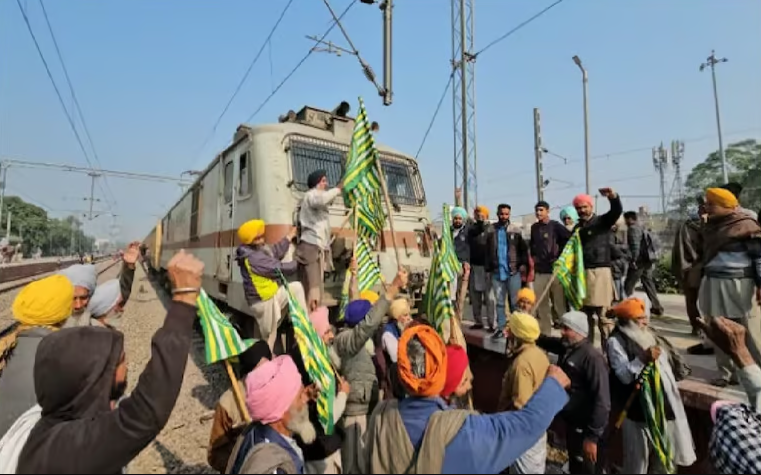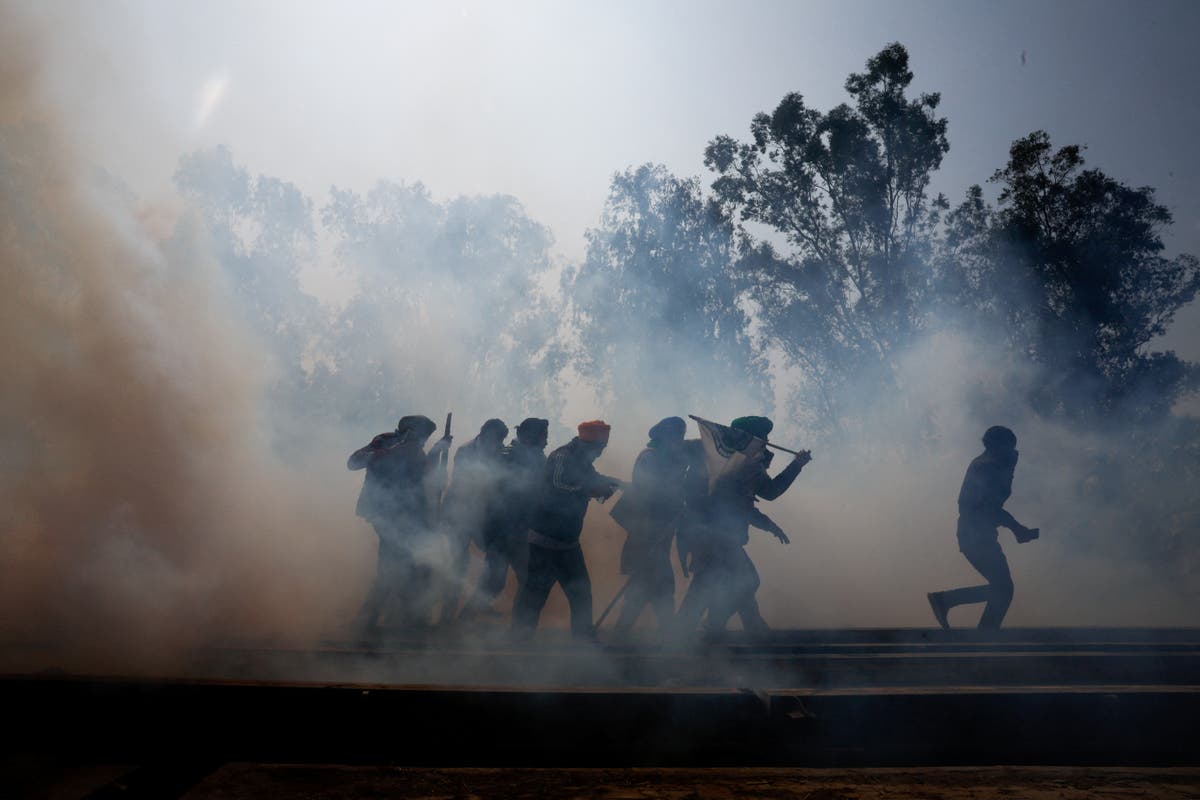
One dead amid police violence as Indian farmers resume march on Delhi
The IndependentFor free real time breaking news alerts sent straight to your inbox sign up to our breaking news emails Sign up to our free breaking news emails Sign up to our free breaking news emails SIGN UP I would like to be emailed about offers, events and updates from The Independent. This is matter of grave concern and at the same time shame for @BhagwantMann for being a mute spectator to blatant intrusion by Haryana police into Punjab territory injuring over 200 farmers and killing this youth-Khaira @INCIndia @INCPunjab.” The visuals from Shambhu border near Punjab and Haryana showed police lining up in riot gear as the farmers, gathered amid morning fog, waved colourful flags emblazoned with the symbols of their unions, with loudspeakers urging them to fight for their rights. open image in gallery A farmer equipped to face police tear gas poses for a photo as Indian farmers who have been protesting for a week to demand guaranteed crop prices wait to march to the capital near Shambhu border that divides northern Punjab and Haryana states, some 200km from New Delhi, India, Wednesday, 21 February 2024 Television images showed some farmers wearing gas masks and other safety gear to protect themselves from the police assault. open image in gallery A man walks through tear gas at the site of the protest, as farmers march towards New Delhi to press for better crop prices promised to them in 2021, at Shambhu barrier, a border crossing between Punjab and Haryana states, India, 21 February 2024 "After the fourth round, the government is ready to discuss all the issues" such as guaranteed prices for the farmers’ crops, he posted on social network X, as the march resumed. open image in gallery Farmers, who are marching towards New Delhi to press for better crop prices promised to them in 2021, run for cover amidst tear gas fired by police to disperse them at Shambhu barrier, a border crossing between Punjab and Haryana states, India, 21 February 2024 The system can apply up to 23 crops, but the government usually offers the minimum price only for rice and wheat.
History of this topic

Farmer leader Dallewal at risk of heart attack: Doctors as hunger strike drags on
India Today
Farmers March To Shambhu Border Protest Site On Tractors: Watch
ABP News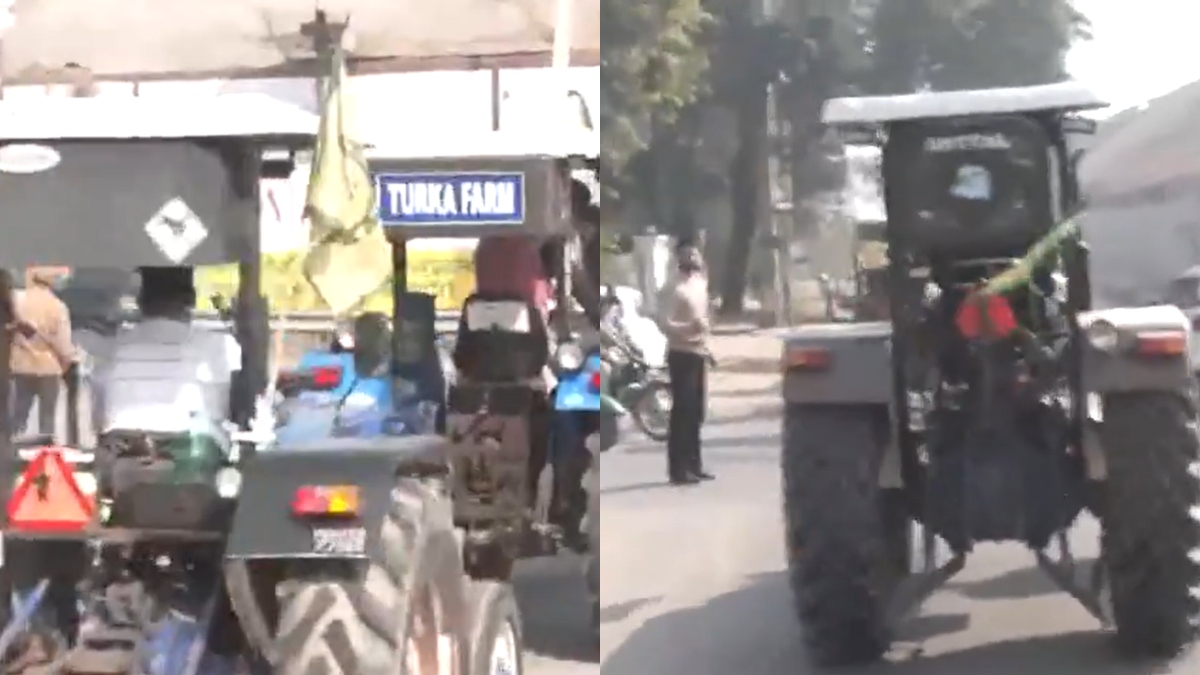
Farmers hold 'tractor march' in Ambala, suspension of internet services continues
India TV News
Farmer leader plans 'Tractor March' and 'Rail Roko' protests on Dec 16, 18
India Today
Lives of farmers committing suicide more valuable than mine: Farmer leader Jagjit Dallewal
Hindustan Times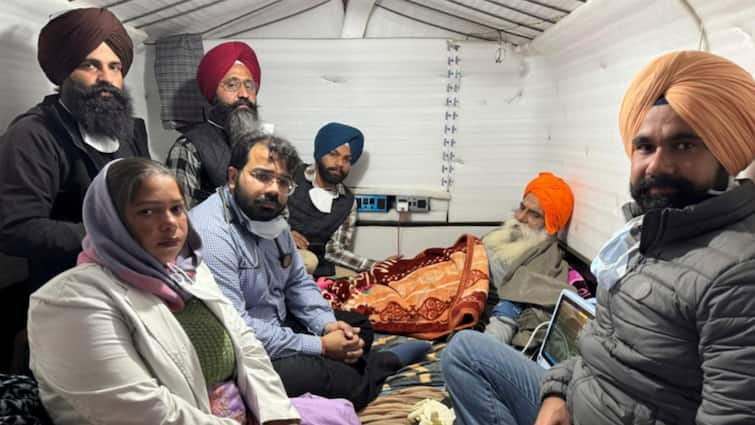
Farmers’ Protest: Dallewal On Day 19 Of Fast Unto Death, 'Lives Of Farmers Dying By Suicide More Valuable'
ABP News
Another attempt by protesting farmers to march to Delhi foiled by Haryana authorities
Hindustan Times
Farmers’ March To Delhi Suspended Again As Pandher Accuses Haryana Police Of Using ‘Chemical Water’ With Tear Gas
ABP News
Punjab: 'Jatha' of 101 farmers to resume foot march towards Delhi
Hindustan Times
Farmers suspend Delhi march for the day as 17 injured after Haryana cops fire tear gas
New Indian Express
Farmers suspend Delhi march after cops open tear gas, water cannon; 17 injured
India Today
Farmers Protest 101 Set To Make Another Attempt For Delhi Chalo March Saturday Dec 14 As Jagjit Dallewal Hunger Strike Continues
ABP News
Farmers protest: 'Dilli Chalo' march resumes on Saturday; fasting farmer leader Dallewal 'unwell'
Hindustan Times
Tikait meets Dallewal; 101 farmers to march towards Delhi on Saturday, says Pander
Hindustan Times
Farmers' protest to gain momentum with Rakesh Tikait's support
India Today
Group of 101 farmers to resume march to Delhi from Shambhu border on December 14
Hindustan Times
Group of 101 farmers to resume foot march to Delhi on Dec 14: Punjab farmer leader Pandher
Hindustan Times
Farmer Protest: Shambhu Border Meeting Today as Farmers Plan Delhi March Strategy
ABP News
No 'jatha' will march to Delhi on Tuesday: Punjab farmer leader Pandher
Hindustan Times
Farmers Halt Delhi March After Shambhu Clash
Deccan Chronicle
Farmers Protest: ’Delhi Chalo’ march suspended for day after nine injured in tear gas shelling
Live Mint
Farmers Suspend Delhi March For Today After Tear Gas Shelling, Agitators At Haryana CM Event Detained — Top Points
ABP News
Farmers' march stopped at barricades, teargas shells fired
Deccan Chronicle
Farmers Resume 'Delhi Chalo' March On Foot Amid High Security At Shambhu Border — Watch
ABP News
Farmers Resume 'Delhi Chalo' March On Foot Amid High Security At Singhu Border — Watch
ABP News
With ‘Modi govt in no mood to talk’, farmers to resume Delhi Chalo march today: Top 10 updates
Live Mint
Farmers protest: Police put barricades, install nails at Shambhu border as farmers set to march towards Delhi
India TV News
Farmers suspend 'Delhi Chalo' march for the day after eight injured in tear gas shelling at Shambhu border
India TV News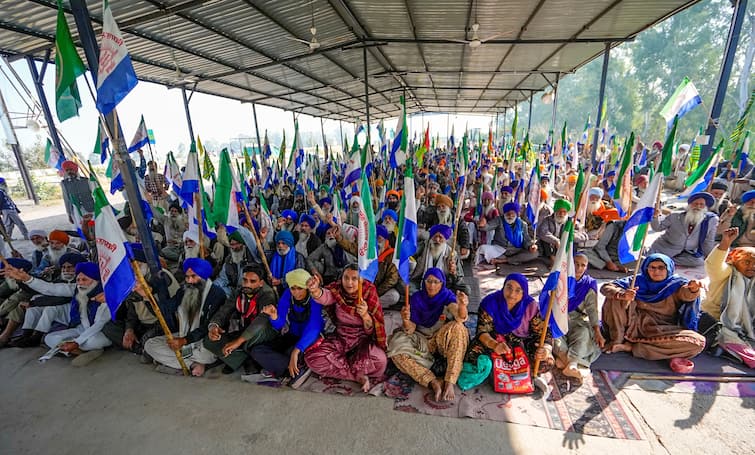
Haryana’s Shambhu Border Fortified As Farmers To Resume ‘Delhi Chalo’ March Tomorrow — WATCH
ABP News
Farmers to resume march to Delhi tomorrow, security beefed up at Shambhu border
Hindustan Times
Farmers suspend Delhi march after clashes at Punjab-Haryana border; six injured
New Indian Express
Farmers suspend Delhi march after clashes at Punjab-Haryana border; six injured
New Indian Express
Farmers to resume Delhi march today, security heightened at Shambhu border
India Today
Farmers suspend protest over teargas shelling injuries
Deccan Chronicle
Farmers clash with police near New Delhi as protests over crop prices escalate
The Independent
In RS, Shivraj Assures MSP For All Crops As Farmers' Delhi March Deferred For Talks With Modi Govt Tomorrow
ABP News)
How farmers’ ‘Delhi Chalo’ march has descended into chaos and violence
FirstpostPolice in India clash with farmers during protest march over minimum price demand for crops
Associated Press
Farmers protest: Farmers to march towards Delhi seeking implementation of 12 demand charter
Op India
Farmers gather at Shambu border to begin protest march to Delhi
Deccan Chronicle)
Farmers begin ‘Delhi Chalo’ march: Here’s what to expect
Firstpost
Farmers’ Protest: Delhi Police on alert, security deployed at border points
The Hindu
Security heightened at Ambala-Delhi border ahead of farmers’ march
Deccan Chronicle
Farmers protest live update: Unions to resume march on Dec 8 if Centre fails to engage in talks
Hindustan Times
Delhi on alert, braces for another traffic chaos, schools shut in Ambala as farmers plan ‘Dilli Chalo’ march
Live Mint
Schools closed today in Ambala amid farmers’ ‘Dilli chalo march’
Live Mint
Farmers' protests received huge booster dose from no less than Vice President: Congress
New Indian Express
Farmers start protest march from Sambhu border; Delhi police on alert, prohibitory order imposed in Ambala
New Indian Express
Farmers' protest march to capital: Police on alert, heavy security at Haryana, Delhi borders
New Indian Express
Schools closed in THIS city due to ongoing farmers' protest | Check
India TV NewsDiscover Related























